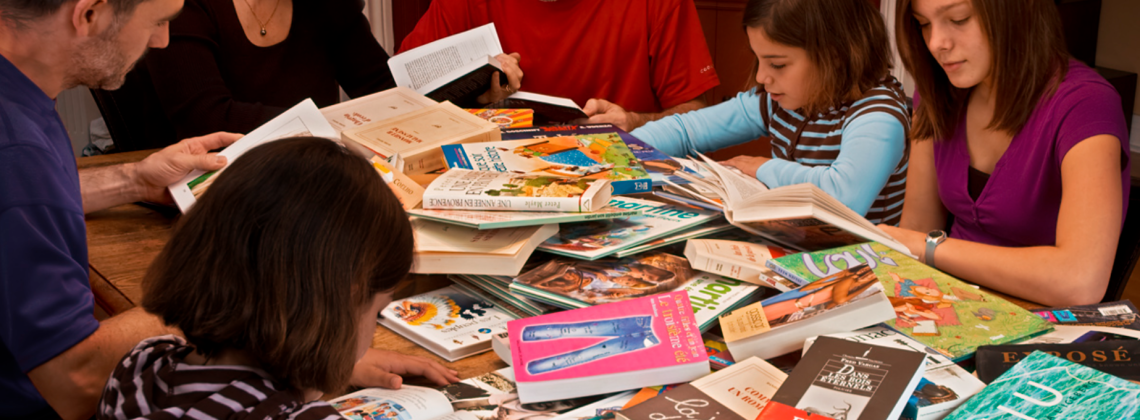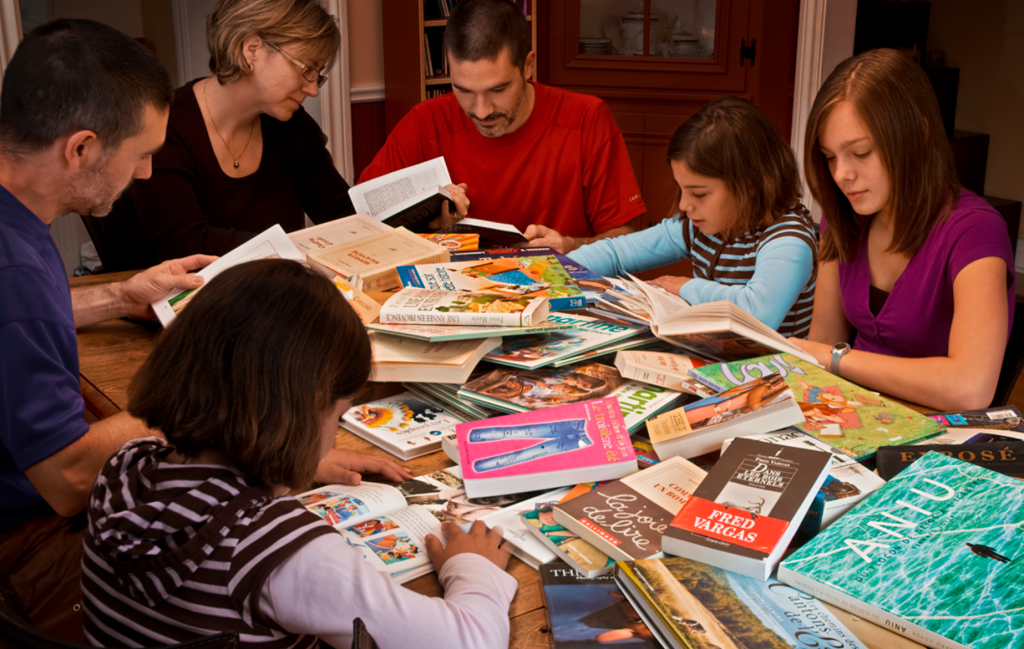

Swanson’s book provides inspiration of the most practical kind
Becoming Homeschoolers: Give Your Kids a Great Education, a Strong Family, and a Life They’ll Thank You for Later by Monica Swanson. Zondervan, 2024. 240 pp., $19.99
Certain life seasons make you a natural magnet for other people’s stories. The first I’ve noticed is when someone is about to become a parent—suddenly, everyone from one’s mother-in-law to the cashier at the grocery store is chomping at the bit to tell their own birth or newborn stories. Another is when one’s child is approaching school age: “Where will Johnny be going to preschool or kindergarten?” a curious acquaintance may ask, promptly launching into the tale of his or her own child’s good or terrible experiences in school.
A funny thing is happening to me as I enter my 40s, however: Suddenly I am the one who tells such stories, rather than the one who merely hears them. I’m no longer the one listening politely with a faint smile, my mind mostly on my pregnancy sciatica or the soon-to-be kindergartner hanging off the edge of my grocery cart. Sometimes I even get asked to share a story these days, which both surprises and flatters me. But there are also times when I find myself telling early parenthood stories without invitation. Perhaps I am still trying to understand my own experiences of early parenthood, or perhaps I feel the need to hold on to them for my own sake. But I do have another motive, too: I want to help and encourage others.
Monica Swanson’s new book Becoming Homeschoolers begins with just such an early parenthood origin story—the story of how she became a homeschooling parent. Sometimes folks outside of homeschooling circles presume that homeschoolers don’t really make choices but are set from day one on one thing: staying away from traditional schools. But that’s not really the case, as Swanson’s story demonstrates. Many—perhaps even most—homeschoolers come at the practice through a combination of discernment, particular local school circumstances, and experience. Swanson, a popular Christian blogger and author of parenting books, started her older children off in private schools, but then switched to homeschooling at her young son’s request. (Yes, this really happens sometimes!)
Swanson’s project in this book is to encourage and equip readers to do the same, even if their kids aren’t the ones to come up with the idea. The book is written in a casual style, sometimes even employing online writing conventions like hashtags and crossed-out words, which I suspect is meant to draw in young parents who likely do most of their reading online. Her goal is to encourage parents to consider and to try teaching their children at home—a concept that often seems overwhelming to newcomers.
The book is divided into three sections: encouragement to homeschool, details on homeschooling at each stage of PreK-12 education, and extras—these are suggestions on sports and extracurriculars, co-ops, schedules, and faith-centered homeschooling, among other things. I will admit to finding the first section a little over-the-top, raising an eyebrow at the extent of some of the claims and wondering about potential counterarguments. But Swanson had me hooked in the second section, when she gets into the nitty-gritty of how to homeschool in the various grades. This is the most important contribution of the book: It does not merely encourage readers to homeschool but is full of ideas and illustrations of how they might do so.
This is helpful not just to potential newcomers to the practice but to families already immersed in homeschooling. Eight years into homeschooling, I still find that each new year brings with it a certain amount of adjustment and even anxiety. “I have to level up this year!” I always think to myself during my planning, because this is almost always true. As our children grow older, their academic needs continue to grow and diversify, requiring increasing commitments of time, energy, and ingenuity from the whole family. Each year brings its own challenges and changes along with discoveries and joys.
So imagine my relief when, as a mother on the cusp of homeschooling a high schooler, I found myself reading two wonderfully detailed, cheerful, realistic, practical chapters on homeschooling teenagers and preparing them for college. Swanson was giving me, her reader, exactly what I needed at this stage: both a chance to reflect on the schooling I have already done and some real help as I plan for the schooling yet to come. I already have a strong philosophy of education and a detailed sense of how my children’s learning styles and personalities work, thanks to my own education and my experience teaching my children so far. What I did not have was guidance on envisioning the entire high school process holistically, on keeping records with an eye toward the possibilities ahead, and on strategizing for both career and college. Swanson’s book offers parents at my stage exactly that, with a welcome dose of empathy and reassurance alongside.
As a relatively experienced homeschooling parent and a historian of education, I don’t agree with all of Swanson’s takes. For example, I think homeschooling in preschool is usually unnecessary. Indeed, many of her examples of homeschooling preschoolers are really just part of ordinary life with young children rather than schooling per se. But Swanson’s goal is to encourage parents to be creative in homeschooling very young children rather than focusing overmuch on workbooks and the like. Parents determined to “do something for preschool” will find that her advice is very good.
I also regret that Swanson undervalues the study of history in elementary school and even middle school, almost entirely without explanation; but this devaluing may primarily speak to widespread problems in history education at these grade levels (a problem I’ve written a little bit about here). Finally, I wish that Swanson had discussed unschooling and other more flexible, less structured forms of homeschooling to a greater degree in her pages. While she acknowledges that she does not address these types of homeschooling fully, I hope that prospective homeschoolers will look more deeply into such approaches at some point. I could make the same comment about Montessori homeschooling or any other number of methods. Swanson has her own way of homeschooling, of course, and writes from her own local (Hawai’i) and curricular (Christian, largely online) and spiritual (again, Christian) perspective. But homeschooling is an enormously diverse practice, as she acknowledges.
This very diversity, however, also means that the only way to really get a sense of what homeschooling can be like before trying it is through individual stories and the sharing of insight and resources, which is exactly what Swanson attends to here along with her more general explanations. We need personal perspectives, because we need specific advice and real-life voices to give us heart as we begin a new school year. Limits in detail regarding other possible approaches or individual academic decisions (like the question of studying history in earnest before high school) are natural in a book that is trying to do something so big and so important: encouraging and equipping parents to take on the mantle of teacher at home.
Overall, I have no hesitation in recommending this book to any parent considering homeschooling, and especially to Christian parents, who will likely agree with part or all of Swanson’s worldview. Wherever your family might be in your children’s schooling, and whether you are homeschooling your kids this year or are merely interested in the prospect, this book will meet you right there and will do so in a most refreshingly practical and generous manner. What higher praise could there be for a book that seeks above all to encourage and support families in educating their children?
Dixie Dillon Lane is an American historian, an associate editor at Hearth & Field, and a contributing editor at Front Porch Republic. Her book, Skipping School: Finding the Roots of Modern Homeschooling in the American Past, is under contract with Eerdmans. Dixie maintains a newsletter of her writing at TheHollow.substack.com.
Photo credit: Pierre Vignau